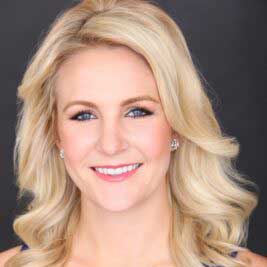Golf
Are commercial-free telecasts possible? Experts break down the future of golf broadcasting

Speculating on the future of professional golf is a popular pastime of late, mostly because there are so many unknowns.
But the same can be for the world of golf broadcasting too. With the game’s stars split on two different tours, and plummeting ratings for some tournaments, there’s plenty of reason to wonder about what kind of changes may be made in the months and years to come.
On the latest episode of Peter Kostis and Gary McCord’s Off Their Rockers podcast, a GOLF production, Kostis and McCord tapped Brandt Packer, a 17-year Golf Channel/NBC production veteran, for his take on the state of the industry.
“If you took over and you had carte blanche, what would you do for a golf telecast 20 years from now?” McCord asked. “Where do you think it will be then, if you’ve got a crystal ball to look?”
“I don’t think I can go that far,” Packer replied. “I mean, I think it’s hard to look 20 days from now.”
Packer said the best way to understand what’s happening is to look at the current TV landscape to get a sense of what networks are dealing with in terms of production cost.
“You, you had the last TV, negotiations, right? And they went up, what, 60 percent through 2030?” Packer began. “I was part of Comcast during Covid, and I thought, as a viewer, what CBS did was tremendous in terms of what they had to do to keep it on the air. From Comcast’s perspective, they still paid us throughout that. I was part of the first one, because we took over Fox’s USGA gig, and so I was part of the first one back in August. I did the US Am at Woodmont, and what had to go through for that to happen, you know, you had double the trucks because you had to stay six feet. There are only certain amount of people that were allowed in the trucks. You had flights, the cost went up, hotels went up, rental cars went up, food went up.
“That inflation never came down, when Covid kinda did their thing,” Packer continued. “Then you take in, now there’s a new TV agreement, which is up 60 percent through 2030. And what you’re getting in terms of your return on your investment, if you just think about it, you’re getting the same thing if you’re the networks, right? And I think that’s what these networks are going through right now, when they have to say, hey, our return on investment is, at best, equal. I mean, I could make the argument it’s worse. You don’t know who’s in the fields. Like you guys have talked about, you’ve lost the villains, you’ve lost the people that, that people really want to watch and they have to make their money back a certain way.
“And so if you take the current landscape, when I last produced, and I imagine it’s the same, you basically had six commercials an hour. So over three hours that averages 18 commercials, and you have to take those and they’re 2.5 minutes each. So you either have to front-load your commercials or back-load your commercials, and no matter what you do, the current landscape of golf Twitter, everyone’s gonna complain about that.”
So what’s the best way forward, given the network’s production obligations and the viewer’s desire for uninterrupted action? It’s a difficult conundrum — but one that Packer believes could achieved with some innovative restructuring.
“Moving forward, there has to be creative ways to advertise this,” Packer said. “If the number one gripe has to do with commercials, I think you have to look at it differently and say, ok, how do we keep the sponsors intact and they’re getting their big return on their investment, the networks still have to make money on this.
“When we did the USGA package for NBC outside the U.S. open when they went commercial free, Rolex put up a ton of money,” he continued. “So what I do would do, the U.S. Am or the U.S. Women’s Am, we were commercial free. Now, you had to do Rolex pops and you had to do things to make up for that. But I think that’s the first thing you need to do is look at, how can the network structure these broadcasts, doing the advertisements in a different way? Because that, to me, is the number one gripe.”
Golf is unique in the world of live sports because the action continues even when the broadcast cuts away for commercials, Packer said.
“The actual essence of the telecast are the golf shots,” he said. “It’s the only event in sport that you go away from it and they keep playing. Never happens in football, never happens in basketball, never happens in baseball. There is a stoppage of play. So I think you have to get creative and say, ok, something’s gotta give. The networks have to give a little bit. The tour has to give a little bit because the product, that would be the number one thing. And then all the other stuff, to me, would be icing on the cake.”
For more insights from Packer, Kostis and McCord on the future of golf broadcasts, check out the full episode below.











